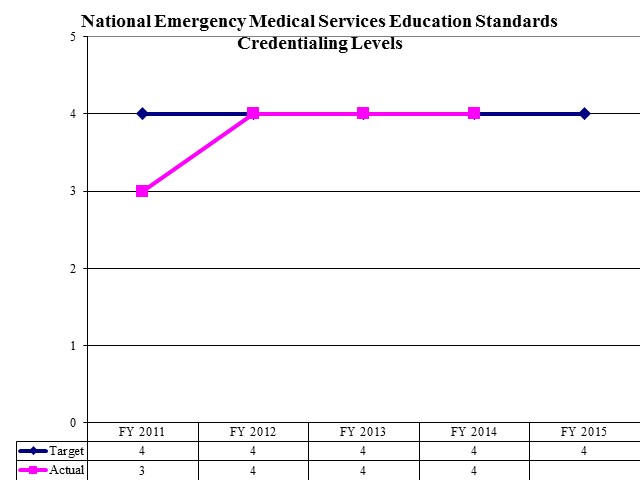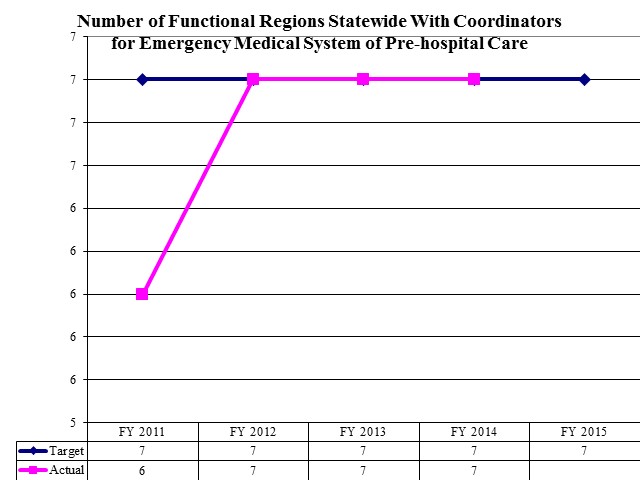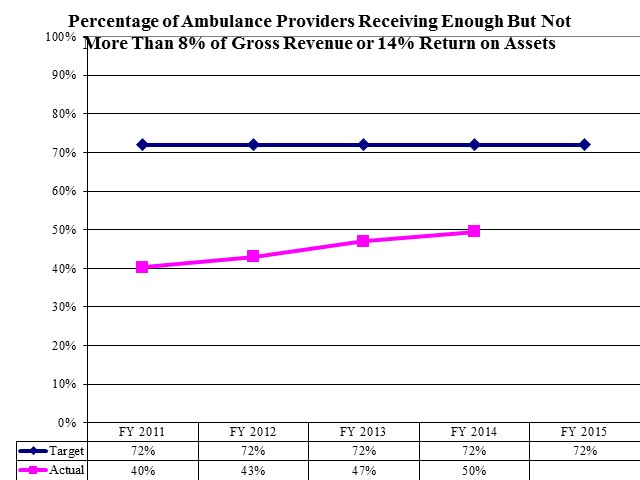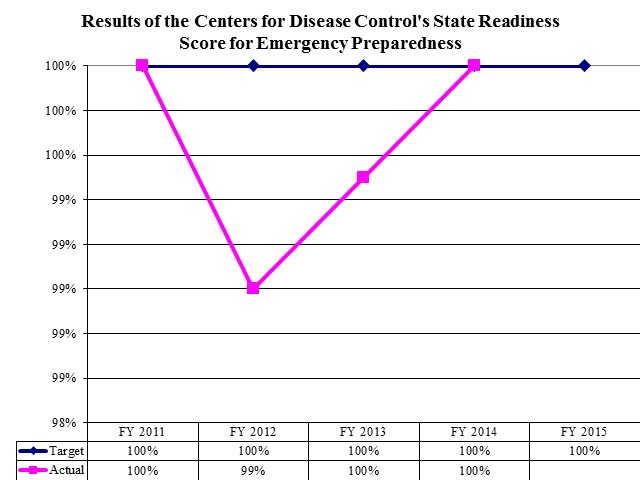The Bureau of Emergency Medical Services is a leadership team functioning as a resource and providing assurance of a quality emergency medical system in the State. The Bureau of Emergency Medical Services (EMS) has as its mission to promote a statewide system of emergency and trauma care to reduce morbidity and mortality, through prevention, awareness, and quality intervention.
During the 2015 General Session, the Legislature appropriated for Fiscal Year 2016, $4,349,000 from all sources for Emergency Medical Services. This is a 5.1 percent reduction from Fiscal Year 2015 revised estimated amounts from all sources. The total includes $454,000 from the General/Education Funds, an increase of 3 percent from revised Fiscal Year 2015 estimates.
In addition to statewide compensation and internal service fund cost increases, the following appropriation adjustments were made during the 2015 General Session:
National Emergency Medical Services Education Standards Credentialing Levels

Number of Functional Regions Statewide With Coordinators for Emergency Medical System of Pre-hospital Care

Percentage of Ambulance Providers Receiving Enough But Not More Than 8% of Gross Revenue or 14% Return on Assets

Results of the Centers for Disease Control's State Readiness Score for Emergency Preparedness

The Bureau implements this mission by:
- Providing customer service and establishing a teamwork model of services.
- Providing information, technical assistance, and consultation to providers of emergency medical services.
- Assuring compliance by emergency medical providers to rules and regulations.
- Promoting the highest standards possible for the statewide provision of emergency medical services, taking into consideration available resources, and investigating alternative funding sources.
- Establishing an infrastructure to provide administrative support that will continually seek to improve, streamline, and find the most cost-effective way to meet the needs throughout the State.
- Encouraging EMS involvement and coordination with existing and new injury prevention and health promotion activities.
- Promoting and supporting programs and activities that address the physical and mental health as well as the safety of EMS personnel.
Emergency Medical Services (EMS) Grants Program
The portion of the criminal fines and forfeitures surcharge that is allocated to EMS has restrictions on its usage established in UCA 26-8a-207. After funding staff support, administrative expenses, and trauma system development, the Bureau then allocates at least 25% (actual percentage determined by the Emergency Medical Services Committee) for per capita block grants for emergency medical services at the county level, determined by population and number of EMS employees. The remaining percentage is allocated as competitive grants distributed to applicants based on the guidelines approved by the Emergency Medical Services Committee.
Emergency Medical Services (EMS) Certification
There are statewide standards for emergency medical services. EMS personnel must obtain certification to prove their proficiency. The National Highway Traffic Safety Administration's standards and curricula provide the basis for Utah's statewide standards for training levels. The differences between levels of certification relate to the types and extent of procedures that EMS personnel may perform, such as starting IV fluids, administering medications, or placing tubes to open a patient's airway.
The monthly caseload is the number of prehospital personnel certified and licensed.
COBI contains unaudited data as presented to the Legislature by state agencies at the time of publication. For audited financial data see the State of Utah's Comprehensive Annual Financial Reports.